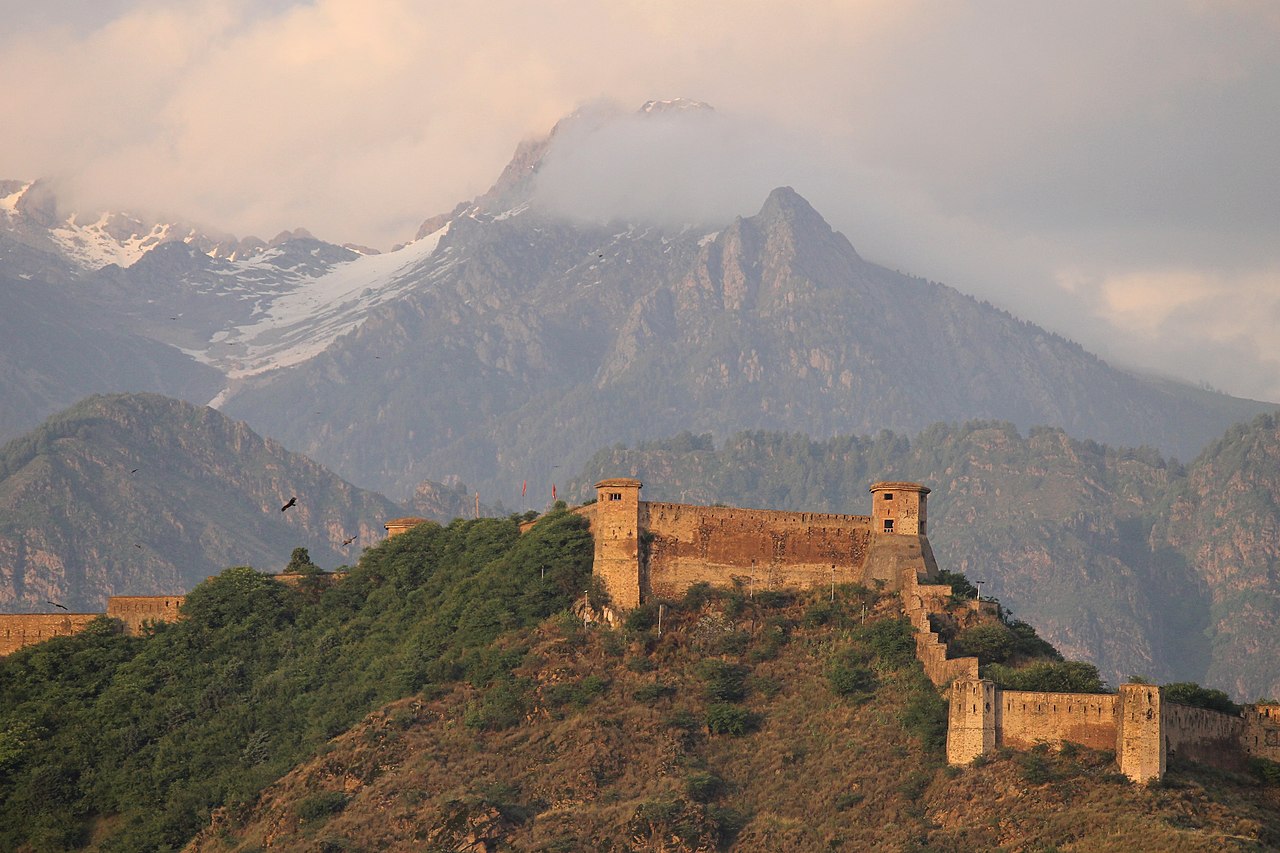Hari Parbat Fort, perched atop the Hari Parbat Hill in Srinagar, Jammu and Kashmir, is a historic fortress that holds a significant place in the cultural and architectural heritage of the region. This imposing structure, also known as the Mughal Fort or Koh-e-Maran, is a symbol of the rich history and architectural legacy of Kashmir, with origins dating back to ancient times.
Construction of Hari Parbat Fort began in the 18th century, during the reign of the Mughal Emperor Akbar, although the site itself has a much older history dating back to the 3rd century BC. The fort was strategically built on a hill overlooking the city of Srinagar and the surrounding plains, providing a commanding vantage point for defense and surveillance.
The fort’s architecture is a blend of Mughal, Persian, and Central Asian influences, with massive stone walls, bastions, and watchtowers enclosing an expansive courtyard and a series of interconnected buildings and chambers. The main entrance to the fort is adorned with ornate gates, intricate carvings, and inscriptions in Persian script, reflecting the grandeur and sophistication of Mughal craftsmanship.
One of the most striking features of Hari Parbat Fort is its location atop Hari Parbat Hill, which offers panoramic views of the surrounding landscape, including the Dal Lake, the city of Srinagar, and the snow-capped peaks of the Himalayas. The hill itself is considered sacred by Hindus, Muslims, and Sikhs alike, with several temples, shrines, and gurdwaras located in the vicinity.
Hari Parbat Fort has played a crucial role in the history of Kashmir, serving as a military stronghold, royal residence, and administrative center for successive rulers and dynasties. Over the centuries, the fort has been the site of numerous battles, sieges, and conquests, as various powers vied for control of the region.
During the Mughal period, Hari Parbat Fort was expanded and renovated by Emperor Akbar’s grandson, Emperor Shah Jahan, who built the massive outer walls and bastions that still stand today. The fort was later occupied by the Afghan Durrani Empire, the Sikh Empire, and the Dogra Rajputs, each leaving their mark on its architecture and history.
In addition to its military significance, Hari Parbat Fort is also associated with several legends and myths that have contributed to its cultural significance. According to Hindu mythology, the hill on which the fort stands was created by the goddess Parvati, who dropped a pebble from the Himalayas, forming the shape of a falcon (or Hari) in flight. The hill is also believed to be the site of the ancient city of Srinagari, mentioned in the ancient Sanskrit texts.
Today, Hari Parbat Fort is a popular tourist attraction in Srinagar, attracting visitors with its stunning architecture, panoramic views, and rich historical heritage. The fort is also a venue for cultural events, art exhibitions, and music concerts, showcasing the vibrant cultural traditions of Kashmir and providing a glimpse into the region’s storied past.
In conclusion, Hari Parbat Fort is a testament to the rich history and cultural heritage of Kashmir, a symbol of the region’s resilience, diversity, and architectural ingenuity. With its imposing walls, majestic towers, and breathtaking views, the fort continues to captivate visitors with its timeless charm and historic significance, inviting all who visit to journey back in time and experience the grandeur of Kashmir’s royal past.



